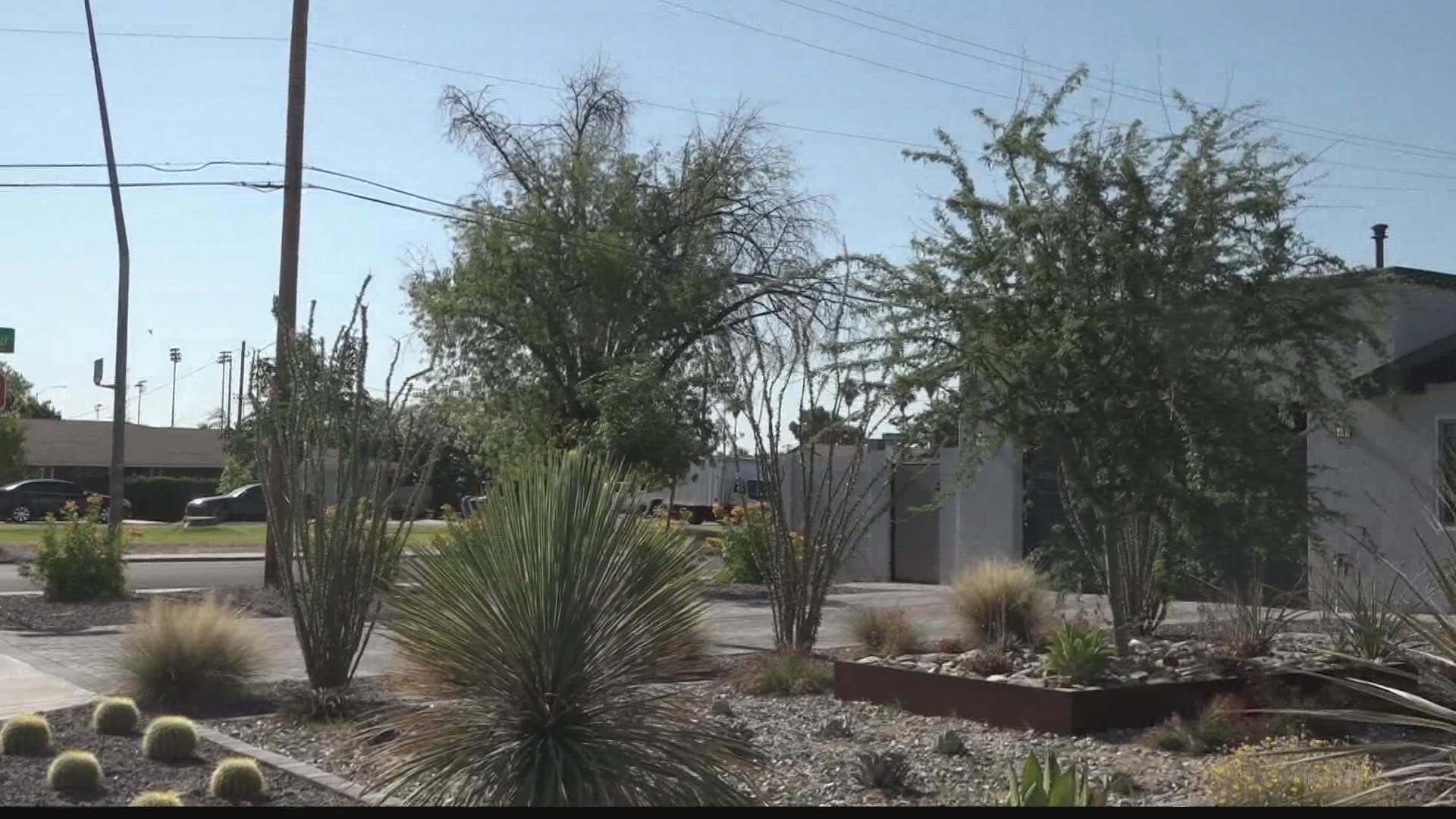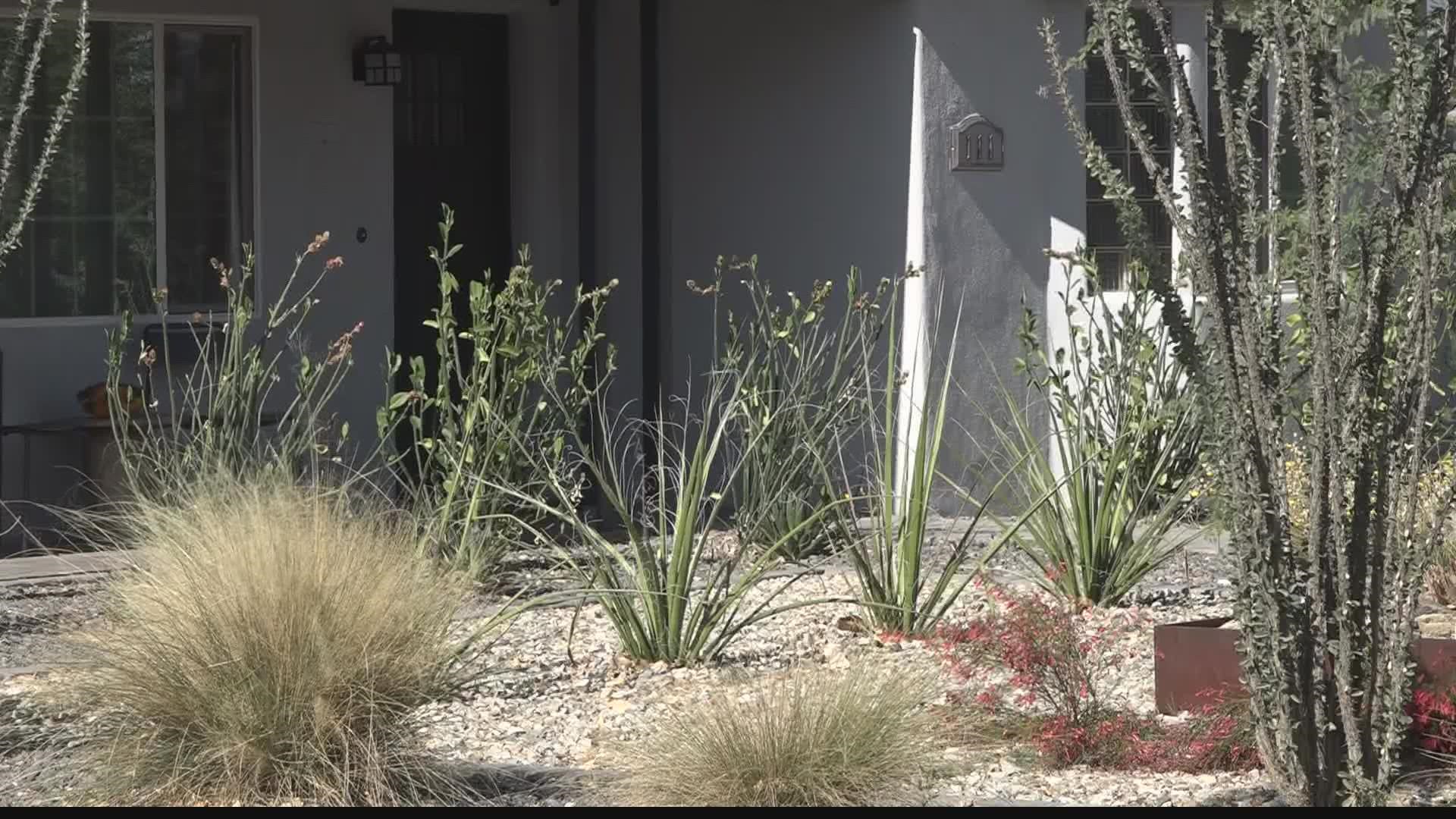PHOENIX — It sounds too good to be true, but there are programs in place to help you save money, while also helping the environment.
On top of that, you’ll get paid to participate.
Multiple cities around the valley offer payouts, enticing neighbors to trade their water-thirsty yards for something much more drought conscious.
Here's a list of cities with the programs:
Mesa
The City of Mesa’s xeriscape program has been around since 2007. Mesa is now incorporating trees into the deal, as part of its “trees are cool” incentive.
The xeriscape program applies to single-family homeowners in Mesa who want to remove at least 500 square feet of living grass and replace it with xeriscape. Xeriscape is low-water-use landscape plants like eucalyptus, bottlebrush, orchid trees and more.
Homeowners who participate in the program can get up to $575 dollars back if the plants are on Arizona’s low water use plant list. In addition to xeriscape, neighbors who include trees are eligible for an extra $50 bucks for the first tree and $75 for two.
Mesa’s conservation coordinator, Becky Zusy, said the low-water-use trees are an added bonus for our desert landscape.
“Plants offer all sorts of benefits including heat mitigation, shade and energy savings and they help retain water on a property,” Zusy said. “Yes, they use water, if you choose more native plants. Some can live off rainfall. All low water-use trees use less water than grass.”
Chandler
The City of Chandler offers similar programs encouraging homeowners to help make a dent in the drought. One is for new homes that aren’t landscaped yet.
If residents install low-water-use plants, they’re eligible for a $200 rebate.
Some of the stipulations include no black plastic under the granite and there needs to be 50 percent coverage with low-water-use plants.
The second program is for turf conversion or grass removal. Homeowners who remove at least 1,000 square feet of grass or more get $200 for every 1,000 square feet removed. The same rules as above apply to contribute to saving water in the Valley, said Deina Burns, Water Conservation Coordinator.
“Grass uses a lot of water, so with turf conversion, which we do have some numbers on, those save about 75,000 gallons on average for our residential customers,” Burns said. “That’s a lot of water in a year. We all know things are drying up and it’s getting hotter. We just want to be wise with our water use long term.”
Phoenix
In Phoenix, for the second year in a row, an environmental nonprofit is taking action to cool Valley communities to make life a little more tolerable for neighbors during the summer months.
The Urban Heat Leadership Academy is looking for people to join them on the request, following a lot of success from last year’s program. Tuesday in the last day Phoenix residents can sign up for the virtual academy. It helps people who live in the city find ways to make their communities cooler, greener and healthier, Anna Bettis, with The Nature Conservancy, said.
“We’ll be inviting them to meet our previous cohort, and volunteer to implement their projects,” Bettis said. “Our hope is to create this community of practice and people who have these relationships with each other and can support each other as they continue to try to work for change in their neighborhoods.”
The Urban Heat Academy comes after findings show communities like Edison Eastlake in Phoenix can be as much as 13 percent hotter compared to a neighborhood just two miles away. Public health data also reveals there were a record-high number of heat-related deaths in Maricopa County and Phoenix accounted for many of those deaths too. More than 330 people died because of the heat, according to the county health department.
Cooling cities has an economic impact too. The Nature Conservancy estimates Metro Phoenix will lose $2.5 billion per year by 2050 in economic production without taking action to cool Phoenix and mitigate impacts of climate change.
The academy is free and is offered in both English and Spanish. The classes are live starting in the middle of June and running through October.
Scorched Earth
Catch up on the latest news and stories on our 12 News YouTube playlist here.


